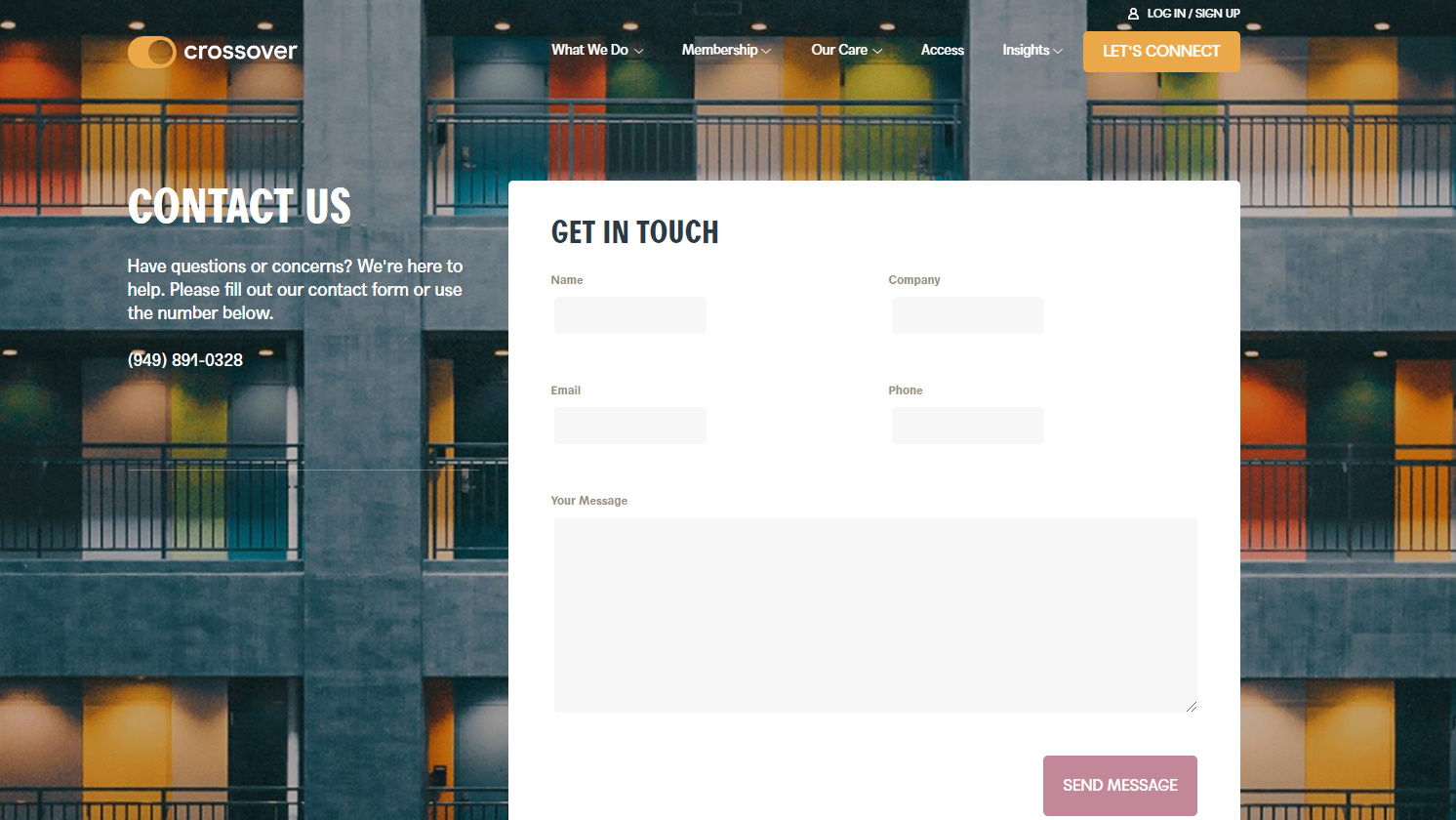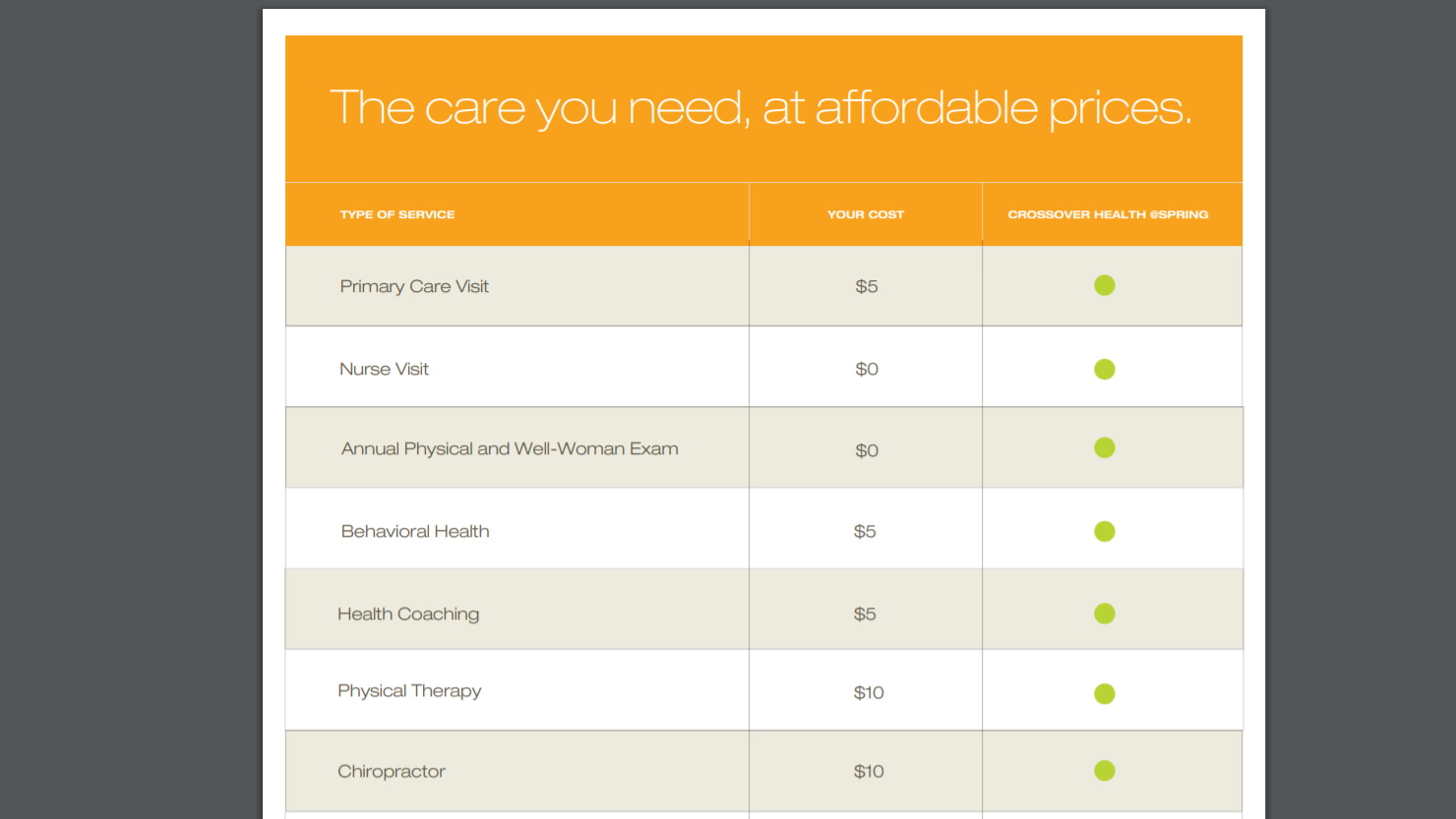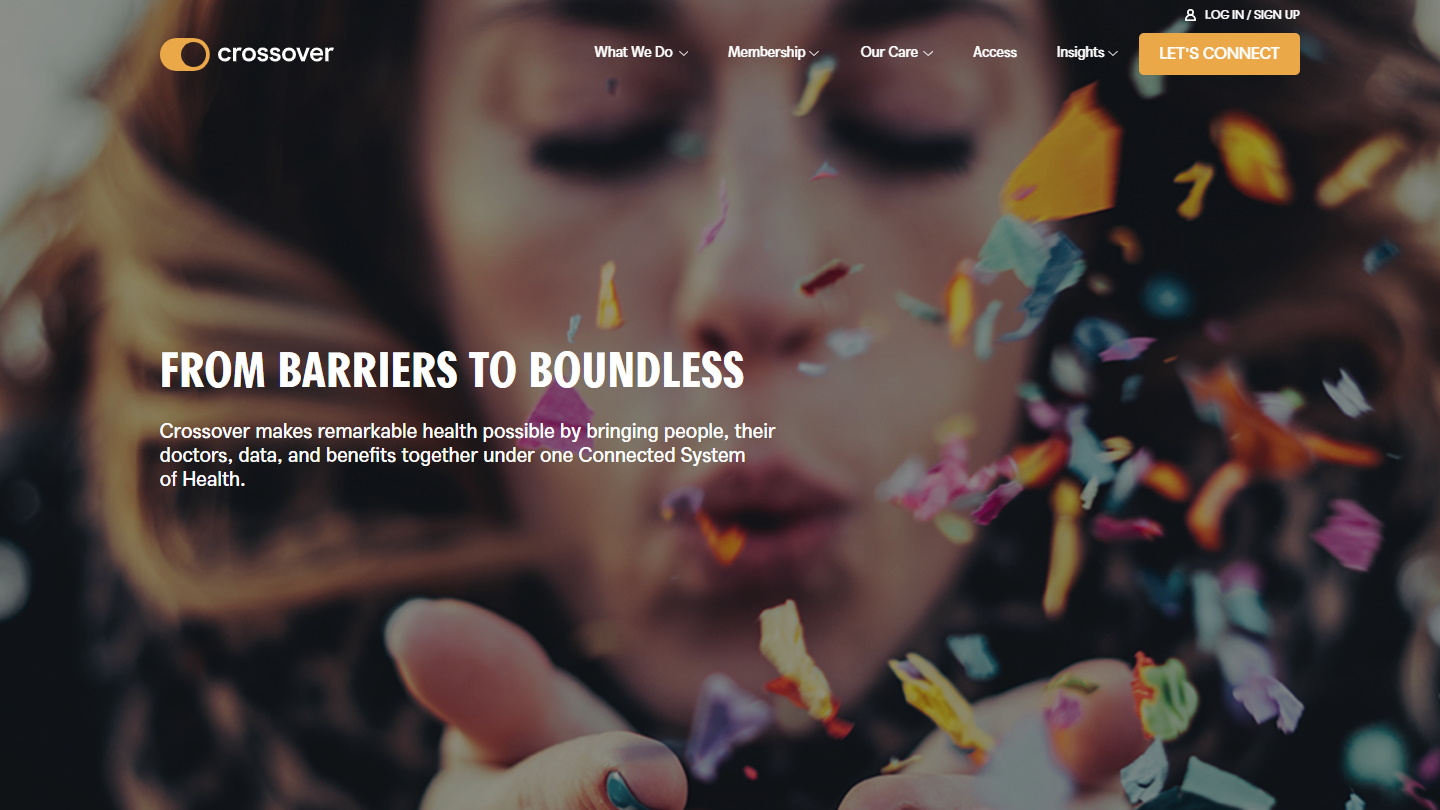TechRadar Verdict
Crossover takes a ‘Digital first’ approach to healthcare, with benefits of reduced cost, and faster access.
Pros
- +
High satisfaction
- +
Affordable costs
- +
Supportive health centers
- +
Digital first virtual visits
Cons
- -
No toll free phone support
- -
Limited support options
- -
Lacks mobile apps
- -
Limited to certain employers
Why you can trust TechRadar
Crossover attempts to bring a new delivery model to healthcare, focusing on health activist employers. Rather than focusing on expensive fee for service visits, Crossover offers both face-to-face and virtual visits into a cohesive and seamless user experience.
To reinforce Crossover’s telehealth offerings, the company acquired Sherpaa Health a few years ago. Crossover is known for serving larger employers, and counts Apple, LinkedIn and Facebook among the organizations that it serves.
Features
The goal of Crossover is to address a major shortcoming of the US healthcare system, namely the difficulties in accessing a primary care provider. Crossover is successful at addressing that concern, and claims an approximate 1.5 million completed visits from their members, with an uber high 96% satisfaction score. It also indicates that 64% of users end up adopting Crossover as their primary care provider.
The mantra for Crossover is ‘Digital First,’ with the goal of faster access, at less cost. Crossover boldly indicates that “70% of care interactions can be handled better online,” although it is unclear what the precise improvement is (quality of care, shorter time to appointment, more efficient diagnosis, patient satisfaction, or something else???), and that 2,500 of primary care conditions can be handled by their dedicated care team. While Crossover takes this Digital First approach, behind that is a “Strategically in person” team that can handle more complex needs. The promise of streamlining care can certainly be more efficient, with Crossover asserting that without this virtual care access “42% will go to urgent care and 8% to ER,” which in many cases will take longer, and also be a more expensive proposition.
While the Virtual Care serves as the initial access point for entry into receiving healthcare, it is really only the beginning. Crossover then will create a turn key employee health center, that is either onsite, or for firms that do not have the space for it on campus, nearsite. These facilities not only offer expanded primary care, but also behavioral health, health coaching services, acupuncture, chiropractic and physical medicine. There is also ready and convenient access to supportive services including an in house laboratory and prescriptions.
The ‘Secret sauce,’ to this success is the Crossover Enterprise Data Warehouse, as it provides a foundation for their Connected System of Health. Rather than waiting for a member to develop the disease, Crossover endeavors to get out ahead. AI gets applied to data from over 30 different databases, which are inclusive of both pharmacy and medical claims, and with advanced analytics, health needs can be predicted, to provide for proactive care planning. Insight is gained into what is effective for improving outcomes, which is then provided back to the medical providers on the care team, so efforts can be focused on where they are most beneficial.
Drawbacks
We find somewhat ironic that while Crossover is used by both Apple and Google for their employees, yet we could not find any Crossover smartphone apps for either the iOS nor the Android platform.
Sign up to the TechRadar Pro newsletter to get all the top news, opinion, features and guidance your business needs to succeed!
Overall, Crossover has an overall positive vibe on Facebook, with few issues. Combing through, we did find a user that was unable to log into their account, and Crossover appeared to be responsive to assist. In another case, a patient had a lousy experience when she was told to get a doctor’s note to clear her for massage therapy during a cancer treatment, and was not pleased how this was handled, along with additional concerns. In this case also, there was a timely response from Crossover as well.

Support
Support for Crossover is somewhat basic, to say the least. The options for contact are limited to just two.
The first is via phone. However, it is not even toll free, and the hours and days of operation are not even listed. Perhaps with the ubiquity of unlimited calling and long distance with cell phone plans these days a toll free number is of less importance, but it still may send the wrong message to some users.
The other option is an online portal to send a message. As users input their email and phone number, it is a safe assumption on how Crossover will contact you back, but it would be nice to be able to specify which is your preferred method.
There are no other methods offered, so those looking for an online forum, chat, a FAQ, whitepapers, on demand video, or anything else will be disappointed.

Pricing
It is hardly a surprise that Crossover’s pricing is not prominently featured on its website. After all, just like on an airplane where flyers often pay different prices for the same trip, the same happens with healthcare. Therefore, with different contracts with different employers, the cost of medical care will vary with different plans.
Then again, with some internet searching, we did locate some prices, and the copays are more than affordable for this sample plan. We are talking about a $5 (£4) copay for a Primary Care Visit, $0 (£0) for an Annual Physical and Well-Woman Exam, and $10 (£8) for Physical Therapy or a Chiropractor. In an era of rising healthcare costs, these low prices are quite refreshing.
Final verdict
Crossover has a unique healthcare network, with its Digital first approach for easier access, supplemented by employer provided clinics- easily accessible to the workforce. While this approach makes perfect sense for tech heavy employees of Apple and Google, it does not easily downsize for smaller employers. We also find the lack of smartphone apps, at least that we could find, puzzling considering the folks involved, and the emphasis on this telehealth approach. We say that if your employer provides a Crossover benefit, with the affordable cost, it is worth availing yourself to.
- We've also highlighted the best telemedicine software
Jonas P. DeMuro is a freelance reviewer covering wireless networking hardware.
